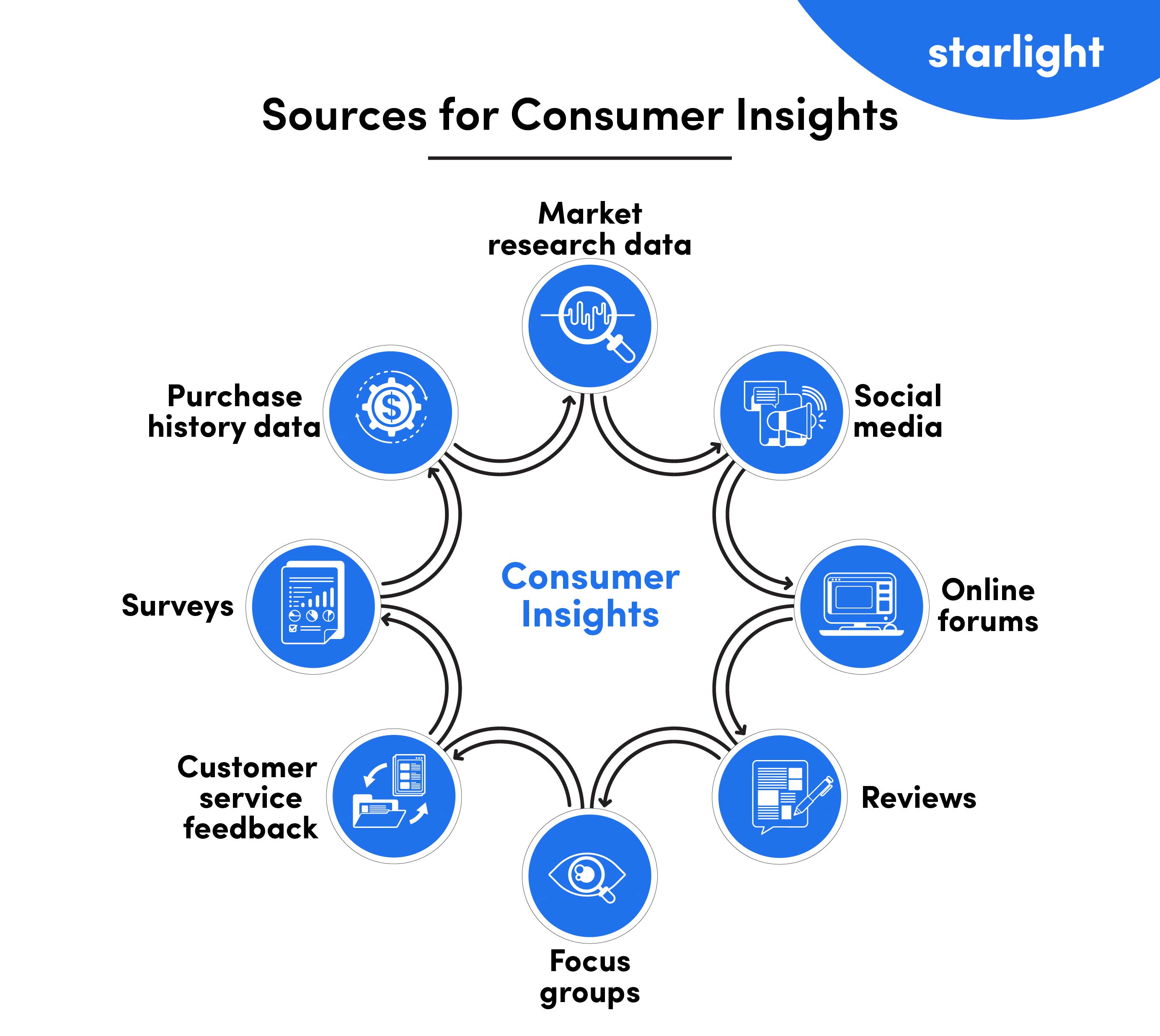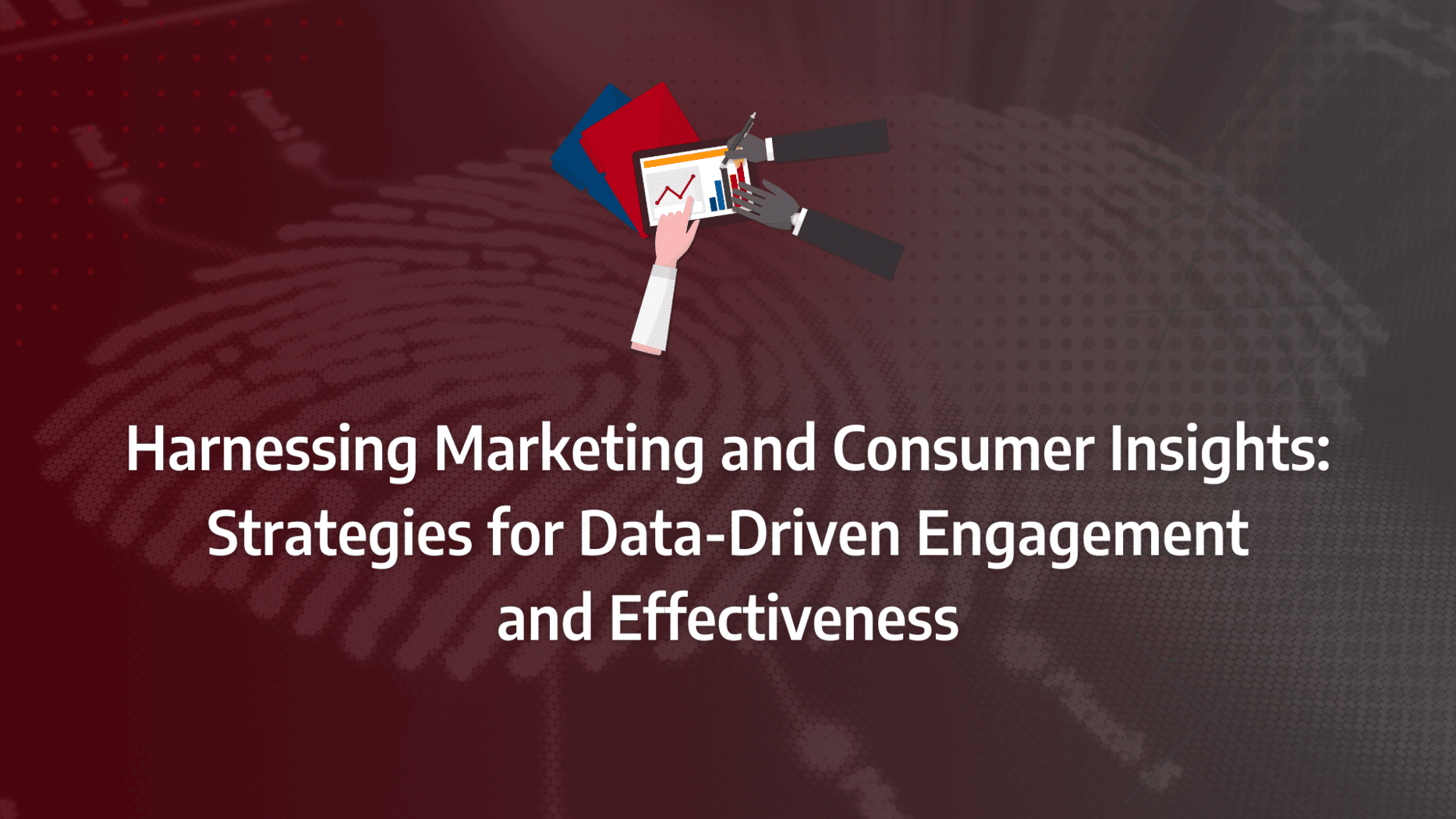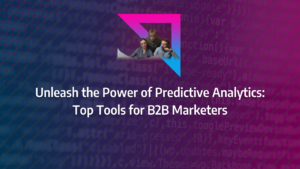In today’s fast-paced B2B landscape, the mastery of marketing and consumer insights is not just an advantage; it’s a pivotal necessity. This comprehensive guide delves into the essence of crafting data-driven strategies, focusing on behavioural analytics, customer preferences, segmentation, and emotional drivers. Here, we unfold a series of innovative, actionable tactics and techniques, each meticulously designed to amplify your marketing effectiveness and forge deeper connections with your customers.
Leveraging Behavioral Analytics for Enhanced Marketing Strategies
Decoding Customer Behaviour: Utilising Behavioral Analytics for Strategic Insights
- Interpreting Interaction Data: Begin by meticulously analysing customer interaction data to identify behaviour patterns. This process involves examining every touchpoint, from website visits to purchase history, to understand the customer journey. For instance, tracking the frequency and duration of website visits can reveal interest levels and potential buying intent. This deep dive into data not only informs your marketing strategy but also tailors it to meet the nuanced needs of your audience.
- Forecasting with Predictive Models: Utilise predictive models to anticipate future buying trends, a technique that transforms historical data into a roadmap for future marketing efforts. For example, by analysing past purchase behaviours and seasonal trends, you can predict future demand and tailor your inventory and marketing campaigns accordingly. This proactive approach not only enhances customer satisfaction but also optimises your resource allocation.
- Segmentation-Driven Communication: Craft your marketing messages based on behavioural segmentation, ensuring that each communication is highly relevant and personalised. For instance, if data shows a segment of customers frequently purchasing a particular product type, tailor your emails to highlight similar products or related offers. This targeted approach significantly increases the chances of conversion by speaking directly to the customer’s interests.
- CRM Integration for Personalization: Integrate behavioural data with your CRM system to create personalised marketing campaigns. This integration allows for a nuanced understanding of each customer, enabling you to send customised messages, such as special offers on birthdays or anniversaries, or recommendations based on past purchases. This level of personalization not only enhances the customer experience but also fosters loyalty and repeat business.
- Measuring Behavioral Analytics Impact: Assess the impact of behavioural analytics on your marketing ROI. This involves setting clear KPIs, such as conversion rates or average order value, and tracking them over time to see the effect of your data-driven strategies. For example, after implementing a new email campaign based on behavioural segmentation, compare the conversion rates before and after to gauge its effectiveness.
Transforming Data into Action: Applying Behavioral Insights in Marketing
- Developing Actionable Strategies: Transform analytics into actionable marketing strategies by identifying key customer behaviours and tailoring your approach accordingly. For instance, if data shows a high engagement with video content, invest in video marketing and track its performance. This strategy ensures that your marketing efforts are aligned with customer preferences, maximising engagement and ROI.
- Navigating Data Interpretation Challenges: Address challenges in interpreting behavioural data by employing advanced analytics tools and seeking expert insights. For instance, use heat mapping tools to understand website user behaviour and adjust your website layout accordingly. Regularly updating your analytics tools and techniques ensures that your strategies remain effective and relevant.
- Cultivating a Learning Culture: Foster a culture of continuous learning and adaptation based on customer behaviour. Encourage your team to regularly review customer feedback and sales data, using these insights to refine marketing strategies. This approach ensures that your marketing remains agile and responsive to changing customer needs.
- Utilising AI for Enhanced Insights: Leverage AI and machine learning to gain deeper insights into customer behaviour. AI algorithms can analyse vast amounts of data to identify patterns and trends that might be missed by human analysis. For example, use AI to segment customers based on purchasing behaviour, and then tailor your marketing campaigns to each segment for increased effectiveness.

Revitalising Customer Engagement: Behavioral Analytics in Digital Marketing
Enhancing Digital Touchpoints with Behavioral Insights
In today’s digital-first landscape, understanding user behaviour on your website or app is crucial. By analysing how customers interact with your digital platforms, you can identify patterns and preferences. This insight allows you to optimise the user experience, making it more intuitive and user-friendly. For instance, if data shows that users frequently visit your blog section, enhancing its accessibility and providing more relevant content can significantly boost engagement.
Optimising Website and App Design Based on User Behaviour
Utilising behavioural analytics, you can tailor your website and app design to meet user expectations. For example, if analytics reveal that most of your users prefer video content over text, incorporating more multimedia elements into your design can lead to increased user engagement. This approach not only improves the user experience but also aligns your digital assets with customer preferences, leading to higher satisfaction and loyalty.
Personalising Email and Social Media Campaigns
Behavioural analytics can transform your email and social media marketing by enabling hyper-personalization. By understanding individual user behaviours, such as the links they click or the content they engage with, you can create more targeted and relevant campaigns. This level of personalization ensures that your messages resonate with your audience, increasing the likelihood of engagement and conversion.
Strategies for Real-Time Engagement Based on Customer Actions
Real-time engagement is key in today’s fast-paced digital world. By leveraging behavioural analytics, you can respond to customer actions instantly. For example, if a customer abandons their cart, an immediate follow-up email with a special offer might entice them to complete the purchase. This proactive approach not only enhances customer experience but also capitalises on immediate opportunities to drive conversions.
Analysing and Adapting to Digital Body Language
Just like in-person interactions, digital interactions have a ‘body language’ that can be analysed. By studying how users navigate your digital platforms, you can gain insights into their preferences and pain points. This understanding allows you to make data-driven decisions to enhance the overall customer journey, leading to improved customer satisfaction and loyalty.

Maximising Conversion Rates: Behavioral Analytics for Effective CTAs
- Crafting Compelling CTAs Based on Behavioural Triggers: Call-to-actions (CTAs) are more effective when they resonate with the user’s current mindset. By analysing behavioural data, you can identify what motivates your users at different stages of their journey. For instance, a user who has spent considerable time on product comparison pages might respond well to a CTA that offers a detailed product guide, thereby nudging them closer to a purchase decision.
- A/B Testing for Optimising Behavioral-Based CTAs: To determine the most effective CTAs, A/B testing is essential. By testing different versions of CTAs with varied messaging, design, and placement, and then analysing how different segments of your audience respond, you can refine your approach for maximum impact. This data-driven method ensures that your CTAs are not just visually appealing but also strategically positioned to convert.
- Integrating Behavioral Insights into Sales Funnels: Incorporating behavioural analytics into your sales funnel can significantly enhance its effectiveness. By understanding the behaviours that indicate a user’s readiness to buy, you can tailor your funnel stages to these insights. For example, a user repeatedly visiting pricing pages might be ready for a more direct sales approach, such as a personalised offer or a consultation call.
- Tools and Technologies for Tracking and Analysing CTA Performance: To effectively leverage behavioural analytics, the right tools are essential. Technologies like heat mapping software, user interaction tracking, and conversion rate optimization tools can provide valuable insights into CTA performance. These tools help in understanding which CTAs are driving conversions and which ones need to be tweaked for better results.
Crafting Customer Preference-Centric Marketing Approaches
Understanding the Core: Analysing Customer Preferences for Targeted Marketing
- Techniques for Gathering and Analysing Customer Preference Data: To truly understand your customers, start by collecting data through surveys, feedback forms, and social media interactions. Analysing this data reveals patterns and preferences, crucial for tailoring your marketing strategies. For example, if data shows a preference for eco-friendly products among your audience, you can adjust your product lines and marketing messages to align with these values. This approach not only enhances customer satisfaction but also positions your brand as responsive and customer-centric.
- Segmenting Audiences Based on Preferences: Effective segmentation is key to targeted marketing. By categorising your audience based on their preferences, you can create more personalised and relevant marketing campaigns. For instance, segmenting customers who prefer online shopping from those who favour in-store experiences allows for tailored communication strategies, enhancing the effectiveness of your marketing efforts. This segmentation leads to higher engagement rates and a better return on investment.
- Customising Product Offerings and Marketing Messages: Tailoring your products and marketing messages to align with customer preferences is essential. If analytics indicate a high demand for a particular product feature, consider highlighting it in your marketing campaigns. Customization can range from product modifications to personalised email marketing campaigns, ensuring that your offerings resonate with your target audience’s needs and preferences.
- Leveraging Customer Feedback for Continuous Improvement: Customer feedback is a goldmine for continuous improvement. Regularly soliciting and analysing feedback helps you understand customer needs and make necessary adjustments to your offerings. This ongoing process not only improves customer satisfaction but also fosters a sense of loyalty and trust, as customers feel their opinions are valued and acted upon.
- Integrating Preference Data with Marketing Strategies: Integrating customer preference data into your marketing strategy ensures that your efforts are data-driven and customer-focused. For example, using preference data to guide content creation can result in more engaging and relevant blog posts, videos, and social media content. This approach not only attracts more customers but also strengthens the relationship with existing ones.
Personalization Mastery: Tailoring Marketing Strategies to Customer Preferences
Developing Personalised Marketing Campaigns
Personalization is more than just adding a customer’s name to an email. It involves creating marketing campaigns that resonate with individual preferences and behaviours. For instance, if data shows a segment of your audience prefers video content, tailor your campaigns with more video elements. This level of personalization ensures that your marketing efforts are relevant and engaging, leading to higher conversion rates.
Utilising Data-Driven Insights for Content Customization
Leverage analytics to understand what content resonates with your audience. If your data indicates a preference for how-to guides, focus your content strategy around educational material. This approach ensures that your content is not only engaging but also adds value to your audience, fostering a stronger connection with your brand.
Strategies for Scalable Personalization Across Channels
Personalization should be consistent across all marketing channels. Develop a unified strategy that allows for personalised experiences, whether your customer is interacting with your brand on social media, your website, or through email. This consistency in personalization enhances the overall customer experience and reinforces brand loyalty.
Tools and Technologies for Preference Analysis
Invest in tools and technologies that aid in preference analysis, such as CRM systems and data analytics platforms. These tools provide valuable insights into customer behaviours and preferences, enabling you to make informed decisions about your marketing strategies. The right technology stack is crucial for effectively implementing a personalised marketing approach.
Engaging Through Preferences: Enhancing Customer Experience with Personalized Content
- Creating Content That Resonates with Customer Interests: To captivate your audience, craft content that mirrors their interests and preferences. Utilise data analytics to discern topics that engage your audience the most. For instance, if your analytics show a trend towards sustainability, develop content that highlights eco-friendly aspects of your products or services. This approach not only increases engagement but also reinforces your brand’s alignment with customer values.
- Best Practices for Content Personalization: Personalization goes beyond addressing customers by name. It involves curating content that speaks directly to their needs and interests. Use customer data to segment your audience and deliver tailored content, such as personalised blog recommendations or targeted video content. This strategy enhances the relevance of your content, leading to increased customer loyalty and engagement.
- Leveraging AI for Dynamic Content Adaptation: Artificial Intelligence (AI) can be a game-changer in content personalization. Implement AI-driven tools to analyse customer behaviour and automatically adjust content to suit individual preferences. For example, AI can suggest personalised article topics or adjust the layout of your website based on user behaviour, providing a more engaging and customised experience.
- Integrating Customer Preferences in Omnichannel Marketing: Ensure a seamless customer experience across all channels by integrating their preferences into your omnichannel strategy. Whether it’s social media, email, or your website, each touchpoint should reflect the customer’s interests and preferences. This consistent personalization across channels creates a cohesive brand experience, fostering deeper customer relationships.
Emotional Drivers in Marketing: Connecting on a Deeper Level
Emotional Marketing: Crafting Campaigns that Resonate with Feelings
- Understanding Emotional Triggers in Marketing: Emotional marketing isn’t just about evoking any feeling; it’s about tapping into specific emotions that align with your brand values and resonate with your audience. Consider how Apple’s marketing, often focusing on feelings of innovation and community, creates a sense of belonging among its users. By identifying and leveraging these emotional triggers, you can craft campaigns that not only attract attention but also foster a deeper connection with your audience.
- Developing Emotionally-Driven Content: To create content that truly resonates, delve into the emotional journey of your customers. Take, for instance, Nike’s advertising campaigns, which often evoke feelings of empowerment and perseverance. This approach involves understanding the emotional landscape of your target audience and crafting messages that speak directly to their aspirations, fears, and values.
- Emotional Branding Techniques: Emotional branding goes beyond mere transactions; it’s about building lasting relationships. A prime example is Coca-Cola’s focus on happiness and sharing, which transforms a simple beverage into a symbol of joy and togetherness. Implement emotional branding by consistently infusing your core brand messages with emotional elements that align with your brand’s personality and values.
- Measuring the Impact of Emotional Marketing: While emotional marketing can be powerful, it’s crucial to measure its effectiveness. Use tools and metrics like sentiment analysis, brand perception studies, and customer feedback to gauge the emotional resonance of your campaigns. This data not only helps in fine-tuning your approach but also in understanding the emotional ROI of your marketing efforts.
Harnessing Emotional Intelligence: Building Deeper Customer Connections
- Emotional Intelligence in Marketing Teams: Cultivate emotional intelligence within your marketing team to enhance customer interactions. This involves training your team to recognize and respond to customer emotions effectively, whether in direct communication, content creation, or campaign execution. For example, a customer service team trained in emotional intelligence can better handle customer complaints, turning potentially negative experiences into opportunities for brand loyalty.
- Personalising Experiences with Emotional Data: Leverage emotional data to personalise customer experiences. This can be achieved through sentiment analysis of customer feedback, social media interactions, and customer service transcripts. By understanding the emotional context, you can tailor your marketing messages and offers to better meet the emotional needs of your customers.
- Tools for Measuring Emotional Responses: Invest in tools that help measure emotional responses, such as facial recognition software for focus groups or AI-driven sentiment analysis for social media and customer reviews. These tools provide quantitative data on how your audience emotionally reacts to your marketing efforts, enabling more informed decision-making.
- Training for Emotional Intelligence: Implement training programs focused on developing emotional intelligence skills among your marketing and customer service teams. This training should cover aspects like empathy, active listening, and emotional regulation, equipping your team to build stronger, more emotionally resonant relationships with customers.
Storytelling in Marketing: Engaging Customers with Compelling Narratives
The Power of Storytelling in Emotional Connection
Storytelling in marketing is a potent tool for creating emotional connections with your audience. It’s about crafting narratives that resonate on a personal level, much like how Airbnb uses real stories of hosts and travellers to build a sense of community and adventure. These stories should align with your brand values and echo the experiences or aspirations of your target audience, making your brand more relatable and memorable.
Crafting Brand Stories Aligned with Customer Emotions
To effectively use storytelling, your narratives should align with both your brand values and your customers’ emotional drivers. Consider how brands like Patagonia share stories of environmental activism, aligning with their brand ethos and appealing to their eco-conscious audience. This alignment not only reinforces brand identity but also deepens the emotional bond with the audience.
Integrating Storytelling Across Marketing Channels
Effective storytelling transcends mediums. Whether it’s through social media, email marketing, or traditional advertising, your story should maintain its core emotional appeal across all channels. For instance, a compelling narrative shared through a video on social media can be reinforced with follow-up stories in email campaigns, creating a cohesive and engaging customer journey.
Measuring the Impact of Storytelling on Engagement
To gauge the success of your storytelling efforts, focus on engagement metrics like social shares, comments, and time spent on content. Tools like Google Analytics and social media insights can provide valuable data on how your stories are resonating with the audience. Additionally, customer feedback and surveys can offer qualitative insights into the emotional impact of your narratives.







